
* The Boeing company scored a hit with its "707" four-engine jetliner, and a bigger hit with the smaller trijet "727". In the 1980s, Boeing introduced a replacement for the 727, the "757", which wouldn't prove quite as successful but was a still a good earner for the company. This document provides a history and description of the Boeing 757. A list of illustration credits is included at the end.
* In the 1970s, Boeing considered development a modernized and stretched variant of the 727 trijet, to be designated the "727-300". However, the energy crisis of the 1970s intruded on the design process, with Boeing engineers finding that greater fuel efficiency dictated a new-design aircraft that only retained the six-across fuselage configuration of the 727.
The six-across seating configuration seemed a bit archaic to many industry observers, the trend at the time being towards "wide body" jetliners, but airlines liked it for short-haul flights, and it was more fuel-efficient. To obtain still greater fuel efficiency for the "7N7", as it was known at the time, Boeing engineers investigated improved aerodynamics and sought more efficient engines. The 727's JT8Ds turbofans had been state-of-the-art in the early 1960s, but they were "low bypass" engines, with a low ratio of airflow through the fan relative to the airflow through the turbine core, and so not very efficient. In the 1970s "high bypass" engines were available that had much higher bypass ratios and greater efficiency; indeed, Boeing had a selection of attractive powerplants.
By 1978, the "757", as it had officially become known, had emerged as a twin-engine jetliner with a low-mounted swept wing, a high-bypass turbofan being mounted under each wing. Although a tee tail had been retained well into the design process, a conventional tail arrangement was chosen instead, since it provided better stall handling. The "glass cockpit" arrangement of the larger 767 jetliner, then in development, was adopted for the 757. In fact, the same cockpit design was used for both aircraft, which was why the two aircraft looked so similar in the nose; 767 aircrew had to step up to get into the cockpit, while 757 aircrew had to step down. The 757 also made extensive use of improved alloys and composite materials to reduce empty weight.
The first 757 prototype performed its maiden flight on 19 February 1982. It was powered by twin Rolls-Royce RB.211-535C turbofans with 166 kN (16,960 kgp / 37,400 lbf) thrust each, the RB.211 having been developed for the Lockheed Tristar jumbo jet. Pratt & Whitney had been working on a new series of turbofans, the PW2037 and the more powerful PW2040, but they weren't ready at the time, and so the 757 was the first Boeing jetliner to use a foreign engine at the outset.
* The initial 757 variant, the "757-200", was certificated in December 1982 and entered service in early 1983. A smaller "757-100", with a capacity of 100 seats, had been considered, but there was no customer interest and it never happened. Options for RB.211-535E4 turbofans, with 178 kN (18.185 kgp / 40,100 lbf) thrust each, or PW P2037 turbofans, with 170 kN (17,325 kgp / 38,200 lbf) thrust each, were offered a few years after initial deliveries; Pratt & Whitney then provided the PW2040, with 185.5 kN (18,910 kgp / 41,700 lbf) thrust. The General Electric CF6-32 was also considered as an option, but GE decided not to proceed with development. There was an AlliedSignal GTCP331-200 APU in the tail for ground power and engine start.
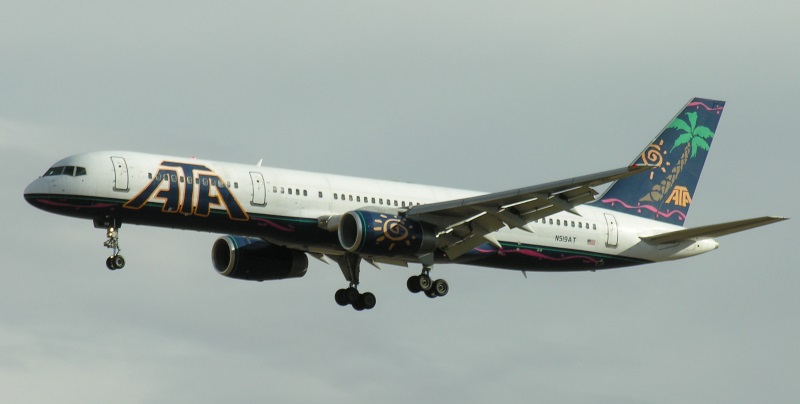
The 757's airfoil design also leveraged off the 767, though the sweep was more moderate -- 25 degrees at quarter-chord for the 757, like the sweep of the Boeing 737 wing, opposed to the 31.5 degree sweep of the 767. The 757's wings had a dihedral of 5 degrees and an angle of incidence of 3.2 degrees. The 757 wing was less efficient in cruise flight, but more efficient in take-off / ascent and landing / descent; since the 757 was a short-haul aircraft, it spent less time in cruise flight and so the wing sweep was an appropriate trade-off. The wings were typically "busy" in good Boeing jetliner fashion, each wing featuring:
The tail arrangement was conventional; the tailplane had elevators but also variable incidence to help with flight trim. Each main landing gear assembly had four wheels in a 2x2 bogie configuration, hinging from the wings to retract into the fuselage, and was fitted with carbon brakes. The nose gear had two wheels and retracted forward.
___________________________________________________________________
BOEING 757-200:
___________________________________________________________________
wingspan:
38.05 meters (124 feet 10 inches)
wing area:
185.2 sq_meters (1,994 sq_feet)
length:
47.32 meters (155 feet 3 inches)
height:
13.56 meters (44 feet 6 inches)
empty weight:
57,265 kilograms (126,250 pounds)
MTO weight:
99,790 kilograms (220,000 pounds)
max cruise speed:
936 KPH (605 MPH / 505 KT)
service ceiling:
11,885 meters (39,000 feet)
range:
5,895 kilometers (3,755 MI / 3,180 NMI)
___________________________________________________________________
Avionics included radios, transponder, navigation and landing aids, plus a weather radar; as mentioned, the 757 had a leading-edge glass cockpit. Another leading-edge feature of the avionics system was the "Engine Indication & Crew Alerting System (EICAS)", a diagnostic system that tracked the condition of the aircraft and alerted the aircrew if it found anything wrong. Yet another was a Honeywell "inertial reference system (IRS)" based on ring laser gyros incorporated into the navigation system.
There were two passenger doors forward of the wing and one passenger door near the tail on each side of the aircraft; in some configurations, there was an emergency exit to the rear of the wing on each side, in others there were two emergency exits on top of the wing on each side. It seems plausible the variation was due to different passenger loads, an all-coach aircraft requiring more emergency exits. There were two flight crew along with cabin attendants. A typical passenger seating arrangement consisted of a first-class cabin with 16 seats, four per row, and a coach cabin with 170 seats, six per row. A high-density all-coach configuration had 239 seats. There were various arrangements of galleys and toilets placed fore, aft, or in the center. There were freight holds under the floor fore and aft of the wing, with loading doors on the right.
The 757's glass cockpit was a clear innovation at the time, and the jetliner also had plenty of engine power. Pilots accordingly named it the "Atari Ferrari", referring to the pioneering "Atari" video game console of the era and of course to the premier Ferrari sports cars.
BACK_TO_TOP* A "757-200PF" package freighter was introduced in 1987 for United Parcel Service, featuring a large cargo door on the forward left side of the fuselage -- with the same dimensions as that of the 727 -- but no passenger capability nor windows. It could carry up to 16 pallets or containers in the main deck, as well as cargo in the two underfloor cargo holds. Maximum cargo load was just under 40 tonnes (44 tons). It was a popular item; from 2001, a fair number of 757-200 jetliners were converted to a similar configuration, the "757-200SF", or "special freighter".
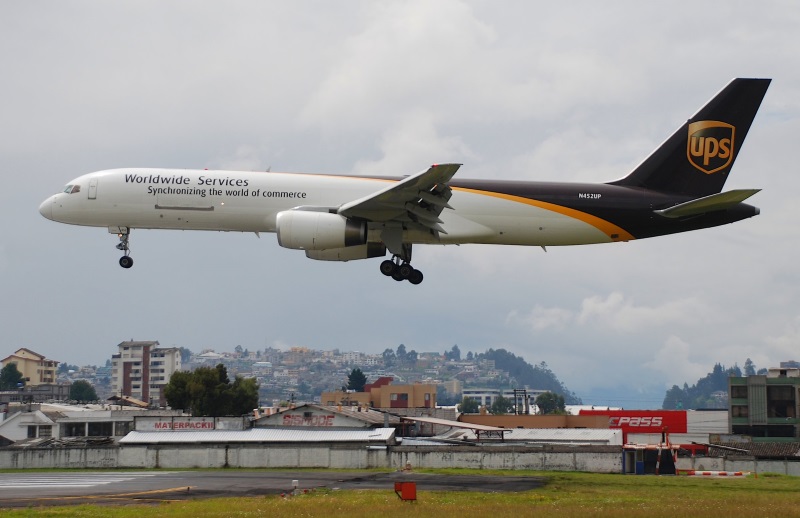
A "combi" version of the 757, the "757-200M", was introduced in 1988, with the cargo door, but also retaining passenger capability. It could handle two to four cargo pallets in the forward section, and carry 123 to 148 passengers in the rear. Only one was built, for Royal Nepal Airlines, this machine being fitted with more powerful RB.211-535E4 engines to support "hot & high" operations.
Executive / VIP configurations were sold under the designation of "77-52". VIP users included the presidents of Argentina and Mexico, as well as the Sultan of Brunei.
* Demand for a 757 variant with more capacity led to the stretched "757-300", with the initial flight of the first prototype on 2 August 1998. The 757-300 had fuselage plugs fore and aft of the wings, the fore plug having a length of 4.06 meters (13 feet 4 inches) and the aft plug having a length of 3.05 meters (10 feet), giving a total length of 54.43 meters (178 feet 7 inches). Empty weight went up to 64,950 kilograms (142,400 pounds); maximum passenger capacity was 289 seats in a single-class configuration, or a more reasonable 240 seats in a three-class configuration. Cabin accommodations were redesigned, the new arrangement being taken from the Boeing 737 Next Generation series. Like the 757-200, the 757-300 featured two passenger doors forward of the wing and one near the tail on each side of the aircraft, but featured both an emergency exit behind the wing and two emergency exits on top of the wing on each side -- for a total of twelve doors.
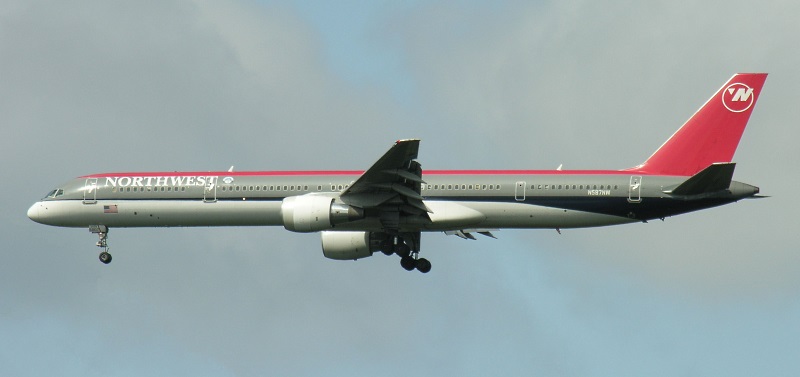
The 757-300 had reinforced wings and landing gear to handle the greater takeoff weight, plus a retractable tail skid to protect against tail strikes. Powerplant options included the RB211-535-E4B with 191.7 kN (19,550 kgp / 43,100 lbf) each, or the PW2043 with 195 kN (19,900 kgp / 43,850 lbf) each.
The 757-300 went into service in 1999, but by that time the 757 program was reaching the end of the line. Sales finally went too soft to support further production, and the last 757, a 757-200, was delivered in 2005. Only 55 757-300 jetliners were built; a total of 1,050 757s, including the initial prototype, had been delivered to end of production. Sales were apparently somewhat below expectations -- not because of any real failing of the aircraft, just because competition was tough.
Boeing has been working towards a "New Midsize Airplane (NMA)", essentially a replacement for the 757, being sized along the lines of the 757-300 -- though it will have two aisles instead of one, being a short wide-body aircraft. It will be a new design, though leveraging off other modern Boeing jetliners like the 787, with consideration of a 225-seat NMA-6X and 275-seat NMA-7X configurations. However, the program has been repeatedly paused, and there's no schedule for introduction at this time.
The 757 is in gradual decline, but remains in widespread service. From 2010, several firms have offered aftermarket conversions of 757-200 jetliners to a combi configuration, typically carrying up to ten cargo pallets forward, with seating for 45 to 58 passengers in the rear. These conversions were usually intended to carry personnel along with the heavy gear they were to operate to remote locations. Two combi conversions were also acquired by the Royal New Zealand Air Force, for use in freight, passenger, VIP transport, or medical evacuation roles.
However, for the time being, the 757 also remains useful as a passenger liner, with a number of users updating their machines to modern interior fits, including items such as LED lighting, plus wi-fi and comsat connectivity. From 2012, Boeing teamed with Rockwell Collins to provide a modernized glass cockpit for 757s (and 767s) in service, replacing the old CRTs with flat panels and incorporating modern electronics. Given the increasing costs of fuel in the 21st century, a number of airlines have chosen to fit winglets to their machines to improve fuel economy.
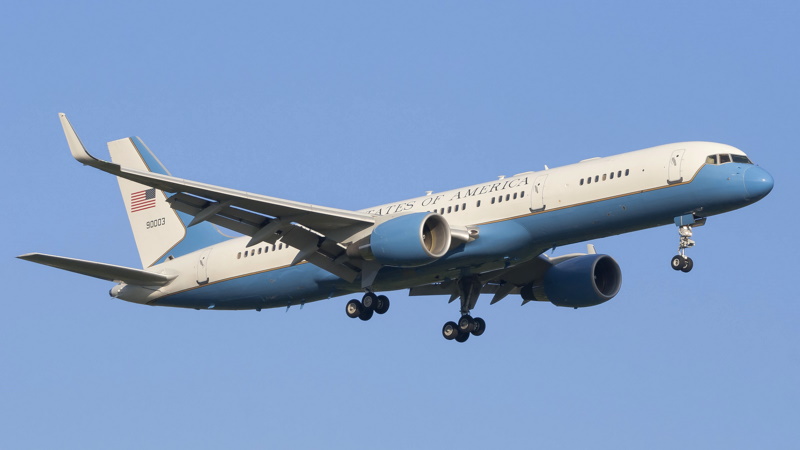
* The US government obtained a number of 757s, flying them under the designation of "C-32". Four 757-200s were obtained in 1998 and 1999 as government executive transports, being designated "C-32" and painted in white and blue "presidential flight" colors; they are used to carry the vice-president and other high government officials, flying out of Andrews Air Force Base in Maryland. They feature a litter of antennas to support an extensive suite of communications gear, and they were all eventually refitted with winglets. It is said that the high-perched landing gear of the 757 is regarded as a plus for VIP flight missions, because security personnel can see underneath it so easily. These aircraft have VIP accommodations, of course, and it seems likely they have defensive countermeasures systems -- though details are unclear.
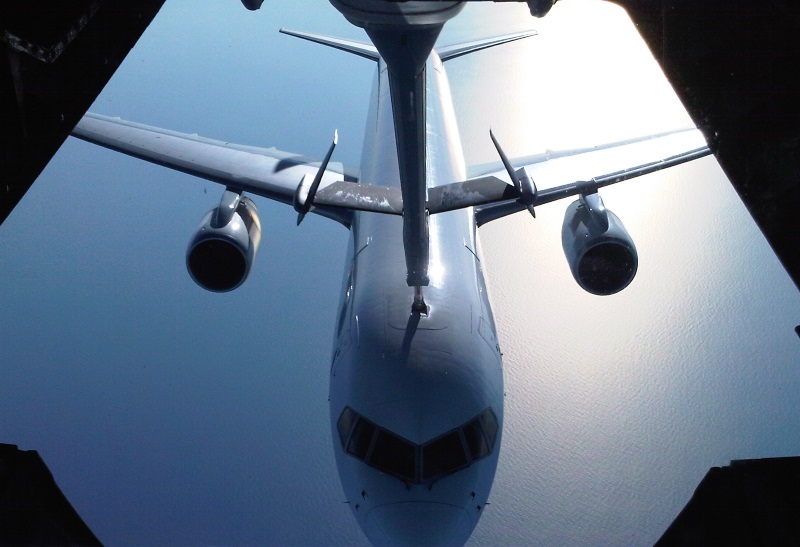
The C-32As are well understood compared to their "C-32B" brethren. Two were obtained originally, with two more acquired later, all being refitted from used commercial machines. They are painted white all over, with unobtrusive national markings, and according to the story, they are used by the US government's "Foreign Emergency Support Team (FEST)", an inter-agency quick-response task force mostly intended to deal with terrorist actions. The mission is apparently known as "Gatekeeper". The C-32Bs don't have the same litter of antennas as the C-32As; there's not much data on their equipment fit, but it is clear that they were fitted with an inflight boom refueling socket behind the cockpit, photos and videos showing them tanking up in midair. Nobody's talking about any other specifics of these aircraft.
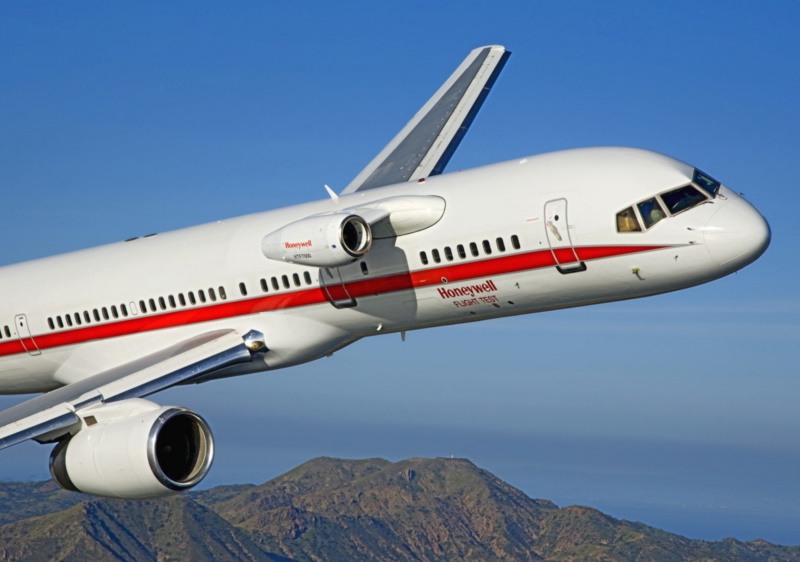
* The 757 has also been used as a trials machine. Boeing retained the original 757-200 prototype as a trials platform for the F-22 Raptor fighter, with the jetliner fitted with a "pointy nose" and a wing mounted on top of the aircraft behind the cockpit. Initial flight of the "Catfish", as it was known for its cluttered appearance, was in 1999; it was still in service at last notice. Honeywell operates a 757-200 as a small turbofan testbed, with the engine unconventionally fitted to a pylon extending from the aircraft's upper forward right fuselage. It made its first flight in its new form in 2008, and also remains in service.
BACK_TO_TOP* Sources include:
Several editions of JANE'S ALL THE WORLD'S AIRCRAFT were consulted as well, and the online Wikipedia also proved useful, in particular for links.
* Illustration credits:
* Revision history:
v1.0.0 / 01 may 12 / Originally released as 727 & 757. v1.0.1 / 01 apr 14 / Review & polish. v1.0.2 / 01 mar 16 / Review & polish. v1.0.3 / 01 feb 18 / Review & polish. v1.0.4 / 01 jan 20 / Review & polish. v1.1.0 / 01 dec 20 / Illustrations update. v2.0.0 / 01 aug 21 / Split out 727 into separate document. v2.0.1 / 01 aug 23 / Review & polish. v2.0.2 / 01 sep 25 / Review & polish. (!)BACK_TO_TOP
